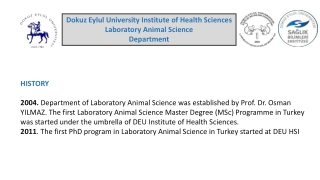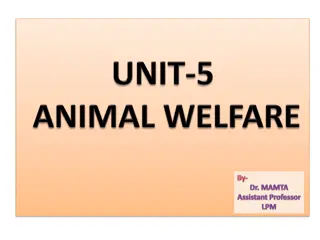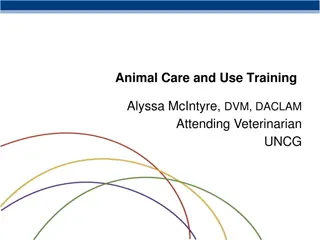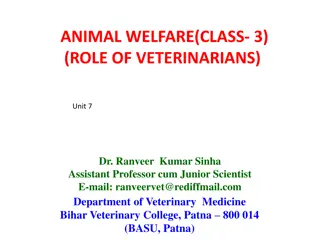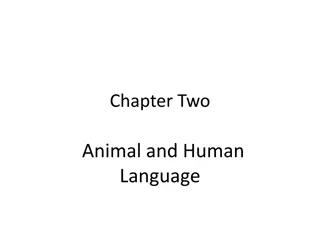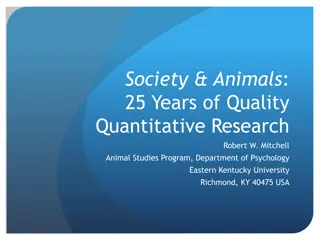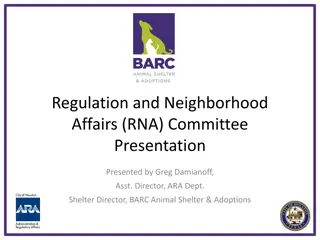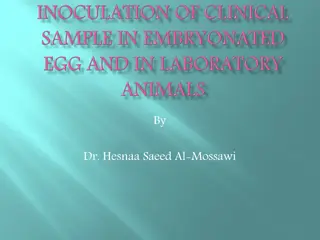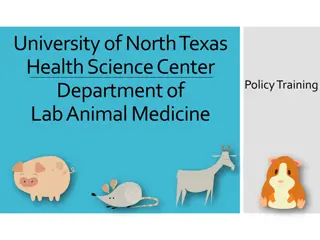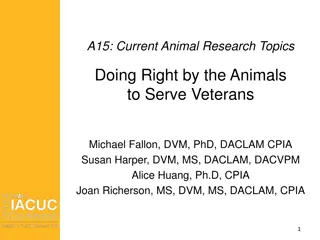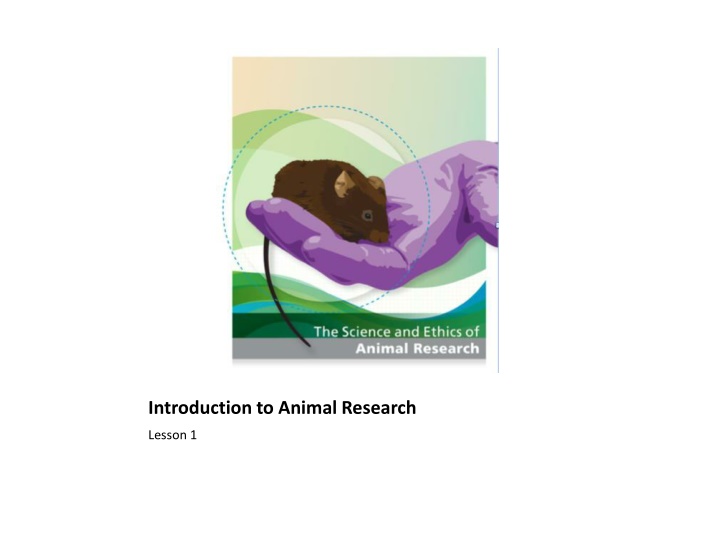
Exploring Animal Research Ethics and Interactions
Dive into the complexities of animal research, ethics, and human-animal relationships in this informative lesson. Discuss the moral considerations, benefits, and responsibilities tied to using animals, along with the various ways humans interact with other species.
Download Presentation

Please find below an Image/Link to download the presentation.
The content on the website is provided AS IS for your information and personal use only. It may not be sold, licensed, or shared on other websites without obtaining consent from the author. If you encounter any issues during the download, it is possible that the publisher has removed the file from their server.
You are allowed to download the files provided on this website for personal or commercial use, subject to the condition that they are used lawfully. All files are the property of their respective owners.
The content on the website is provided AS IS for your information and personal use only. It may not be sold, licensed, or shared on other websites without obtaining consent from the author.
E N D
Presentation Transcript
Introduction to Animal Research Lesson 1
Activity 1 SILENT CHALK TALK
Chalk Talk Guidelines Respond to the main comment anywhere on the poster you would like. Respond to others by drawing an arrow from their comment to yours. Keep all responses respectful and school-appropriate. If you agree with a comment add an exclamation point (!) or a star (*) If you disagree with something that someone said, explain why you disagree, using appropriate language. Do not cross out or write over anyone else s comments. Pictures are completely permissible; just keep them appropriate. NO TALKING!!!
Activity 2 ANIMAL USE ACTIVITY
Part 1 HOW DO HUMANS USE ANIMALS?
Pod Discussion Question What kinds of relationships do you have with other animals? (ex. In what ways do you use them or interact with them?)
Ethics and Animals Remember: Ethics helps us to work through difficult questions in a systematic, rational way. Ethical questions around the use of animals include: Does the benefit of using an animal in any way outweigh the moral cost of taking an animal s life? How shall we treat each other and living things? Is bringing about the greatest good for the greatest number the right thing to do? What are our duties towards other living things? What are our duties to people with cancer? Spinal cord injuries? Diabetes? Should animal interests be considered equal to those of humans? Does this pertain to all animals?
Part 2 PREDICTING THE NUMBERS
Part 3 BENEFITS AND REGULATIONS
Pod Discussion Look at Handout 1.1 and answer the following questions: Do the activities listed seem equally worthy of the animals lives? Do some lead to a greater benefit than others? Why? Brainstorm any regulatory oversight (supervision, laws, or rules) that influences how much pain or suffering an animal might experience before or at the time of death.
Examples of Regulatory Oversight Animals killed on roadways Benefit humans only by allowing us to drive on long stretches of open road. There are few rules and regulations pertaining to animals killed or injured on the road. Construction engineers may consider the migration patterns of animals when constructing certain roads. After being hit, animals may suffer before dying.
Examples of Regulatory Oversight Animals used for food Great benefit to humans, supplying a substantial amount of caloric and protein intake for the majority of Americans. How does the vegetarian or vegan viewpoint influence the above statement? The care and use of food animals is regulated by the Human Slaughter Act. In most states, animals must be rendered insensible to pain in the slaughter process.
Examples of Regulatory Oversight Animal research Great benefit to humans through medical advances such as the elimination of smallpox, rabies, polio, measles, the advancement of surgical procedures, and treatments for heart disease, cancer, diabetes, leukemia and other diseases. Animal research and resulting euthanization is conducted under stringent regulations. Animals also benefit from veterinarian vaccines and treatments made available through animal research. 93% of animals used in research either do not experience pain or are given drugs to relieve pain during research.
Examples of Regulatory Oversight Hunting Can benefit humans by providing food and animal products to people. Also used to thin overpopulated species and manage wildlife. The number and species of animals, hunting season and equipment type is controlled through the sale of hunting licenses, which is regulated by each state s department of fish and game. Regulations vary from state to state, and many states require hunter education classes that emphasize safety and may teach about humane hunting practices.
Examples of Regulatory Oversight Animal Shelters Euthanizing excess dogs and cats in shelters is of questionable benefit, except perhaps for dogs found to be dangerous. Regulation of animal shelters varies from state to state; most states require pets to be licensed, which can aid in the return of an animal picked up or turned in to animal control officials. Most shelters follow the American Veterinary Medical Association s guidelines on humane euthanasia. The number of animals euthanized in shelters has been substantially reduced over the past decades due to successful spay and neuter campaigns.
Where do they belong on the spectrum? Highly regulated Little benefit to humans Great benefit to humans Not regulated

